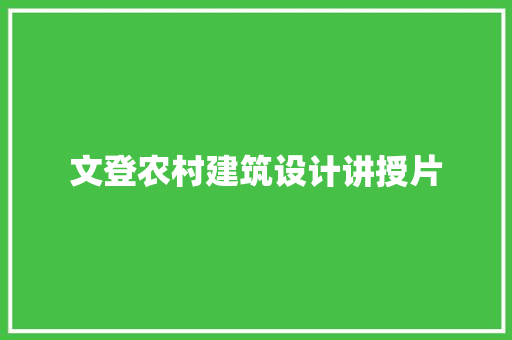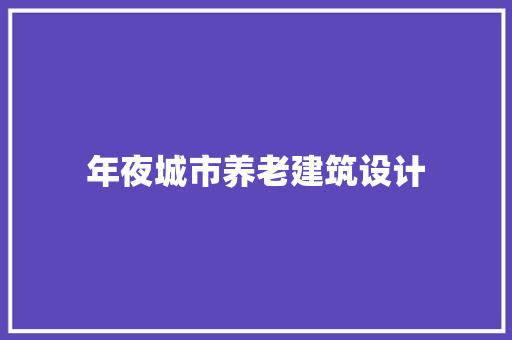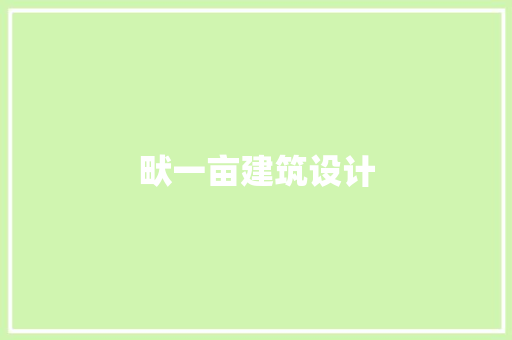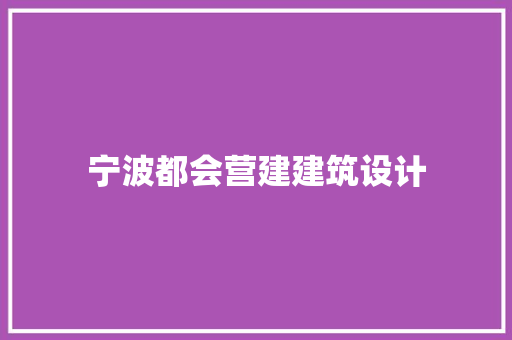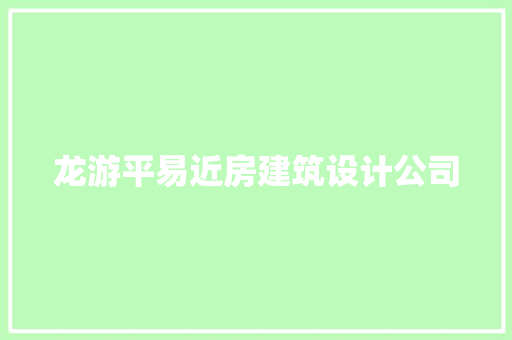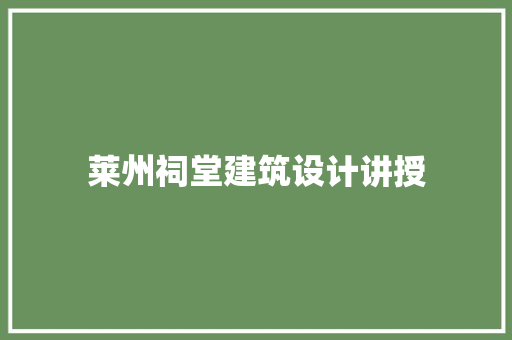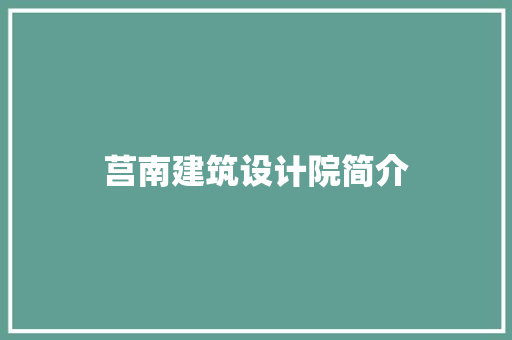In April 2019, five years after the initial design project, the same designer team returned to Xihe village to launch an interior space upgrading project for Xihe Cereals and Oils Museum. The upgrading project is aimed at building the museum into a multi-functional institution that provides parenting activities, field education, tea seed oil production, and sales of agricultural products, based on the original exhibition design.
西河粮油博物馆外景

西河粮油博物馆外立面
2013年8月1日,河南信阳市新县“新县梦·英雄梦”方案设计公益行活动正式启动。正是这次公益设计活动,使西河村落迎来了巨大的转机,也让设计团队与西河村落结缘。
On 1 August 2013, a not-for-profit planning and designing campaign, entitled “Dream of Xinxian County, Dream of Heroes”, was officially kicked off in Xinxian county, Xinyang city, Henan province. This initiative brought a significant opportunity for Xihe village and enabled its collaboration with the designer team.
西河湾鸟瞰图
区位图
新县位于大别山革命老区,2017年前是全国穷苦县。西河村落间隔县城约30公里,是山区中的一个自然村落。村落落一方面具有较丰富的自然、人文景不雅观:风水山林、清末民初古民居群、祠堂、古树、河流、稻田、竹林等;另一方面,交通闭塞,经济掉队,缺少活力,空巢情形严重,常住村落民大多为留守老弱儿童和智障村落民。
Xinxian county is located in the old revolutionary base area of the Dabie Mountain. It had been a national-level poverty-stricken county before 2017. Xihe is a mountainous village about 30 kilometers away from the county seat. On the one hand, the village enjoys rich natural and cultural landscapes, such as mountains and forests with geomantic features, historic houses built during the period from the late 19th century to the early 20th century, ancestral halls, ancient trees, rivers, rice fields and bamboo forests. On the other hand, it has extremely limited transport access to the outside and an underdeveloped economy, lacking vigor and vitality. Empty-nest families are quite common and most permanent village residents are the senior, children, and mentally disabled adults.
改造前的室内空间(粮仓)
2014年第一次升级后的博物馆室内
经历了5年利用后的餐厅
2013年,设计团队的事情聚焦在对西河村落一组1958年的粮库改造上。通过对园地中5座建筑的空间重构和功能更新,设计师成功的将五十年代的“西河粮油交易所”转变为二十一世纪的“西河粮油博物馆及村落民活动中央”。改造后,建筑的功能包括一座小型博物馆,一处特色餐厅,以及多功能用场的村落民活动中央。这座新建筑既是西河村落新的公共场所,也成为当时激活西河村落的主要出发点。
In 2013, the designer team launched the design project to remodel a group of granaries constructed in 1958. By re-constructing spaces and re-designing functions of the five buildings within the site, the designer team has successfully turned the 1950s Xihe Cereals and Oils Exchange into the 21st-century Xihe Cereals and Oils Museum & Village Activity Center. The remodeled building complex includes a small museum, a characteristic restaurant, and a multi-functional village activity center. The new construction establishes itself not only as a new public space for villages but also an engine to revitalize the village.
“西河良油”文创产品
在建筑改造的同时,设计团队还为西河村落策划了新的家当:茶油,并设计了干系产品的logo–《西河良油》,可以说是一次“空间-产品-家当”三位一体的跨专业设计考试测验。而西河粮油博物馆正是承载产品和家当的空间。
While remodeling buildings, the designer team also planned a new industry – production of tea seed oil, and designed the logo for relevant products – Quality Oil of Xihe. It is cross-over design attempt for the integrated development of space, products and industry.
百年古法榨油油车,现仍可利用
一座古老的油车被安置在博物馆的空间中,它不是纯挚的展品,它同时是真正的生产工具。2014年11月25日,时隔30余年,西河湾又开始了古法榨油的生产,而这油便是《西河良油》,榨油的工具便是这架有300年历史的油车。
As a space to exhibit tea oil products and industry, Xihe Cereals and Oils Museum houses an old oil press machine which is not only an exhibit but also a production equipment in operation. On 25 November 2014, production of tea oil using traditional methods resumed after thirty years. The 300-year-old oil press machine was reemployed to produce tea soil, but with a modern brand name – Quality Oil of Xihe.
西河人的标语
韶光来到2019年,5年韶光飞逝,西河村落在这5年中也发生了大改变。古村落得到了全面修缮,也新建了民宿和帐篷营地等旅游做事举动步伐,现在西河村落已经成为年接待游客数十万人次,吸引青年人返乡创业的村落庄振兴模范村落。
Five years have passed and great changes have taken place. The ancient village has undergone comprehensive repairs and tourist service facilities such as B&B and tent camping have been added. Today, Xihe has become a model village of countryside revival that accommodates hundreds of thousands of visitors annually, attracting many young residents to return to the village to start up business.
从水面看西河粮油博物馆及村落民活动中央
随着变革,西河粮油博物馆也面临新的寻衅和任务。如果将原有空间进一步梳理,提高效率,进一步加强参与性、娱乐性,完成空间升级,适应西河村落新的利用需求是2019年摆在设计团队面前的命题。
Changes taking place in the village have posed new challenges and tasks on Xihe Cereals and Oils Museum. The designer team is faced with the challenging task to upgrade original spaces so as to enhance their effective, interactive and recreational uses and meet new needs of the village.
博物馆室内被分为“粮”“油”两个主题空间
改造剖析
室内空间的重新设计环绕“粮”和“油”展开,也再次回应了建筑的名称“西河粮油博物馆”:建筑的两个房间,一个主题是“粮”,一个主题是“油”。
The redesign of interior spaces focuses on “cereals” and “oils”, in response to the name of the museum. The two spaces within the museum features the themes of “cereals” and “oils” respectively.
“粮”主题空间
粮空间,看重儿童的体验,分别从“春夏秋冬”的四季入手支配空间分区,每个时令对应一个主题,即“春播”、“夏长”、“秋收”、“冬藏”。空间和家具强调互动性,希望冲破原有博物馆以“看”为主的调性,让不雅观者(特殊是儿童)能够参与个中,可“触”、可“听”、可“磨”、可“尝”。
The cereal space, with emphasis on children‘s interactive experience, consists of four zones that respectively respond to four seasons – sowing in spring, growing in summer, harvesting in autumn and storing in winter. Space and furniture design highlight interaction, with the aim of enabling visitors, in particular child visitors, to enjoy interactive experience through touching, listening, operating and tasting, rather than simply viewing exhibits.
“春种”五谷展示区
五谷展示
春—展墙
春—展桌
因此,“春种”在于“触摸”和“认知”作物本身:该区域被设计成一个围合的农作物知识小讲堂,使得孩子们可以围坐在一起并亲手打仗到各种将要在春天播种的作物。这种体验将赞助以直不雅观的讲解,不雅观众从这里开始对农耕与农时的认知之旅;
The “sowing in spring” section enables visitors to touch and understand crops. It is an enclosed lecture room where children can sit together and touch crops to be sowed in spring. This interactive approach is supported with lecture teaching so that visitors can start their museum tour to understand farming activities and seasons.
“夏长”声音装置
夏—装置
具有互动性的家具
“夏长”在于“谛听”环境、“感知”万物成长的“自然协奏曲”:该区域放置了多少收纳声音的艺术装置,每一个装置内会有高低错落的由竹子制作而成的听筒,凑近的时候会听到夏季的村落庄中熟习的声音,比如虫鸣和晚风吹过树梢的沙沙声;
The “growing in summer” section enables visitors to listen to the sound of nature and perceive how things grow. Art installations collecting sounds are arranged in the section. Bamboo receivers in each installation enable visitors to listen to familiar countryside sounds in summer, such as insect chirping and treetop rustling.
“秋收”石磨
“秋收”则通过“碾磨”表示:一台从庄家家中收来的石磨被放置在展厅中心。在事情职员的辅导下,孩子们与他们的父母可以共同利用这台传统石磨来碾磨秋日收成的农作物,如稻米、小麦、高粱等。亲自的体验让“脱壳”、“碾磨”这些农事生产词汇从书本上走到现实中。
The “harvesting in autumn” section provides visitors with milling experience. A millstone collected from a farmer household is installed in the center of the exhibition space. Under the guidance of museum staff, children and their parents can work together to operate the traditional millstone to grind crops harvested in autumn, such as rice, wheat and sorghum, learning such agricultural terms as hulling and milling through DIY activities.
“冬藏” 亲子互动体验区
“冬藏”则是这一穿越四季的农事体验旅程的终点,本区域也可被称作“亲子协作事情坊”,旨在让不雅观众“品尝”到由农产品制作而成的适口食品以及“制作”大略的农具模型。西河保留着诸多食品制作的传统工艺,依循着这些传统制作方法,孩子们可以与父母一同品尝到自己手作的板栗饼、猕猴桃干、米糕等,在不雅观念上全面认识农产品从种子到食品的完全过程。
The “storing in winter” section is the destination of the agricultural tour. Also called the “parents-children collaborative workshop”, this section enables visitors to taste delicious food processed from agricultural products and make simple models of agricultural tools. Many traditional food-making skills are still practiced in Xihe today. Using these traditional skills, children and their parents can enjoy chestnut cakes, dried kiwi fruits and rice cakes they make by themselves and gain knowledge about the whole process from seed sowing to food making.
家具的组合办法
位于室内空间中的条带状的矮桌是主要的元素。根据不同年事段利用者的利用尺度,它的高度既可以作为儿童活动的桌子被利用,用来做手工,面点;也可以作为成人的坐凳。此外,这些矮桌可以拆卸,移动和自由组合。通过移动和组合,空间得以产生不同的分隔、变革。
Strip-shaped low tables are important elements in the museum’s interior space. Their height is adjustable, functioning either for children to do handwork or pastry or for adults to sit. These low tables can be also dissembled, moved or re-structured so as to enable different spatial divisions or variations.
“油”主题空间
孩子们体验榨油工艺
看台
油空间是在原来榨油作坊根本上的升级。原空间中的古老油车仍旧保留在原位置,这个支配与传统的习俗有关。油车由一颗300年大树主干制成,树干粗的一端称为“龙头”,龙头必须朝向水源,也便是村落落中的西河,榨油冲杠撞击的方向要和水流的方向相反,于是油车就有了现在的方位。环绕油车,新支配了半圈坐台,供不雅观者可以舒适、稳定的不雅观看榨油演出。坐台也进一步强化了空间的领域感,以及榨油的仪式感。在设计师看来,这种仪式性的生产,或者生产的仪式感才是中国村落庄最为宝贵的遗产。
The oil space has been upgraded on the basis of the original oil press workshop. The old oil press machine is retained in the original place, whose arrangement is related to traditions. The oil press machine is made from a 300-year-old trunk. The thicker end is called the “dragon head” which must face the water source – Xihe River winding through the village. The pole of the oil press should on the opposite direction from that of water flow. Hence the direction of the oil press machine. A semi-round platform is newly added around the oil press so that visitors can appreciate oil press performance in a comfortable way. The platform also enhances the domain effect of the space and the ceremonial effect of oil press performance. In eyes of the designers, this ceremonial production, or in other words, production ceremony, is the most valuable countryside heritage in China.
文创产品展示售卖区
发卖部分
西河粮油交易所旧标牌
与油车相对,空间的另一端支配了商品货架,紧张用于发卖与茶油有关的产品。早在2013年,西河项目的一期事情中,设计师就为西河村落策划并设计了《西河良油》的品牌。但遗憾的是,当时的西河村落对付茶油的经营并不善于,因此有机茶油的家当发展的并不理想。本次空间升级正是希望将家当思路延伸下去,进一步将空间与经营,空间与家当结合在一起,使游览、不雅观赏、体验和产品融为一体。
On the other side of the space are shelves selling tea oil products. In the first phase of the project conducted in 2013, the designer team planned and designed the brand name of “Quality Oil of Xihe”. Regrettably, however, villagers were not good at tea oil business at that time and the organic tea oil industry did not see satisfactory development. The new spatial upgrading project is aimed at further developing the industry by integrating space design with business operation and industrial production and implementing a development strategy integrating sightseeing, museum experience and product sales.
粮油博物馆平面
总平面
项目信息——
项目名称:西河粮油博物馆室内空间更新设计
项目地点:河南省信阳市新县西河村落大湾
业主:西河村落村落民互助社
主持建筑师:何崴
项目团队:赵卓然、陈龙、李星露、汪令哲、华孝莹、叶玉欣
设计韶光:2016年09月-2019年03月
建造韶光:2019年03月-2019年04月
建筑面积:300平方米
拍照师:金伟琦
Project information——
Project name:Interior Space Design & Renewal for Xihe Cereals and Oils Museum
Location: Xihe Village Great Bay, Xin County, Xinyang City, Henan Province
Client: Villager Cooperative of Xihe Village
Principal Architect: He Wei
Designers:Zhao Zhuoran,Chen Long,Li Xinglu,Wang Lingzhe,Hua Xiaoying,Ye Yuxin
Design Period: Sep.2016-Mar.2019
Construction Period: Mar.2019-Apr.2019
Photos: Jin Weiqi
Site Area: 300 sqm.



